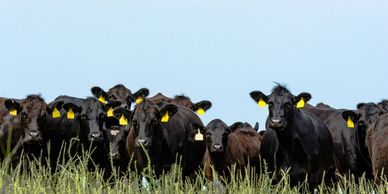Understanding Livestock Danger Protection (LRP) Insurance Coverage: A Comprehensive Overview
Browsing the world of animals threat security (LRP) insurance can be an intricate endeavor for lots of in the agricultural field. This type of insurance coverage uses a safeguard against market fluctuations and unexpected circumstances that might influence livestock producers. By recognizing the intricacies of LRP insurance, manufacturers can make educated choices that might guard their procedures from monetary threats. From exactly how LRP insurance coverage functions to the numerous protection alternatives readily available, there is much to reveal in this comprehensive guide that could possibly shape the way livestock manufacturers approach threat management in their organizations.

Just How LRP Insurance Policy Functions
Occasionally, recognizing the auto mechanics of Animals Risk Security (LRP) insurance can be intricate, yet breaking down how it functions can provide clearness for ranchers and farmers. LRP insurance is a risk monitoring tool created to protect animals manufacturers versus unanticipated rate declines. The policy enables producers to set a protection level based upon their details requirements, choosing the variety of head, weight variety, and protection rate. When the plan is in area, if market value fall below the insurance coverage rate, manufacturers can file a case for the difference. It is very important to note that LRP insurance is not a profits assurance; rather, it focuses only on rate danger defense. The coverage duration normally varies from 13 to 52 weeks, supplying flexibility for manufacturers to select a period that aligns with their manufacturing cycle. By using LRP insurance policy, herdsmans and farmers can alleviate the monetary risks connected with rising and fall market costs, guaranteeing higher security in their operations.
Eligibility and Coverage Options

When it pertains to coverage options, LRP insurance offers manufacturers the adaptability to select the insurance coverage level, insurance coverage duration, and recommendations that ideal suit their risk management requirements. Protection degrees normally range from 70% to 100% of the expected ending worth of the insured animals. Producers can also choose coverage periods that align with their production cycle, whether they are insuring feeder livestock, fed livestock, swine, or lamb. Recommendations such as price danger security can additionally tailor coverage to safeguard against unfavorable market changes. By recognizing the qualification requirements and insurance coverage alternatives readily available, animals producers can make educated decisions to handle danger properly.
Advantages And Disadvantages of LRP Insurance Policy
When reviewing Livestock Risk Defense (LRP) insurance, it is important for animals producers to weigh the advantages and negative aspects integral in this danger administration tool.

One of the content primary benefits of LRP insurance is its capability to give protection against a decline in livestock prices. Furthermore, LRP insurance coverage supplies a level of flexibility, enabling producers to tailor coverage degrees and policy periods to suit their specific needs.
One limitation of LRP insurance is that it does not shield versus all types of threats, such as illness outbreaks or all-natural catastrophes. It is important for producers to carefully evaluate their specific danger exposure and financial scenario to figure out if LRP insurance is the right threat administration device for their operation.
Understanding LRP Insurance Policy Premiums

Tips for Maximizing LRP Perks
Maximizing the benefits of Livestock Threat Protection (LRP) insurance policy needs calculated preparation and aggressive risk monitoring - Bagley Risk Management. To make the most of your LRP coverage, consider the complying with ideas:
Routinely Assess Market Conditions: Remain notified concerning market fads and price fluctuations in the livestock market. By keeping an eye on these variables, you can make informed decisions regarding when to buy LRP insurance coverage to safeguard versus prospective losses.
Set Realistic Insurance Coverage Degrees: When picking insurance coverage degrees, consider your production costs, market price of livestock, and site web prospective dangers - Bagley Risk Management. Setting reasonable coverage degrees guarantees that you are adequately protected without paying too much for unnecessary insurance policy
Expand Your Protection: As opposed to depending entirely on LRP insurance, take into consideration expanding your danger administration methods. Incorporating LRP with other risk management tools such as futures agreements or alternatives can supply thorough insurance coverage against market uncertainties.
Testimonial and Readjust Coverage Routinely: As market problems change, periodically assess your LRP protection to guarantee it aligns with your existing danger exposure. Changing coverage degrees and timing of purchases can aid maximize your danger protection approach. By adhering to these ideas, you can maximize the advantages of LRP insurance coverage and secure your livestock procedure against unforeseen threats.
Final Thought
To conclude, animals danger protection (LRP) insurance coverage is a valuable device for farmers to handle the economic risks connected with their livestock procedures. By understanding exactly how LRP works, qualification and protection alternatives, as well as the benefits and drawbacks of this insurance, farmers can make educated choices to protect their resources. By carefully thinking about LRP premiums and applying strategies to maximize benefits, farmers can alleviate possible losses and make certain the sustainability of their operations.
Livestock producers interested in acquiring Animals Risk Security (LRP) insurance policy can explore a range of qualification criteria and protection choices tailored to their details animals procedures.When it comes to insurance coverage alternatives, LRP insurance offers producers the adaptability to pick the coverage degree, their website insurance coverage duration, and recommendations that ideal match their risk management demands.To grasp the ins and outs of Livestock Risk Defense (LRP) insurance policy fully, recognizing the variables affecting LRP insurance policy costs is crucial. LRP insurance premiums are identified by different aspects, including the protection degree picked, the expected cost of livestock at the end of the coverage duration, the type of livestock being guaranteed, and the length of the protection period.Review and Adjust Insurance Coverage Consistently: As market problems alter, periodically examine your LRP insurance coverage to guarantee it aligns with your existing danger exposure.